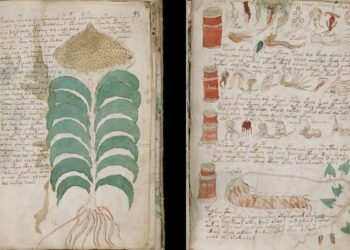Archaeologists have unearthed the burial of a woman, believed to have been a shaman, at Çemka Höyük, a Neolithic settlement in southeastern Turkey.
 The burial, dating back approximately 12,000 years to the Pre-Pottery Neolithic A (PPNA) period, offers a rare glimpse into the symbolic relationships between humans and animals during a transformative era in human history.
The burial, dating back approximately 12,000 years to the Pre-Pottery Neolithic A (PPNA) period, offers a rare glimpse into the symbolic relationships between humans and animals during a transformative era in human history.
The burial site, located in the Dargeçit district of Mardin province on the left bank of the Tigris River, was excavated in 2019. The woman, aged between 25 and 30 years at the time of her death, was found buried in a prone position on her right side, oriented northwest-southeast, and facing west. Her grave was notably covered with a large, flat limestone block, an atypical practice for the PPNA period.
The presence of numerous animal bones in the burial, including the skull of an extinct cattle species known as the aurochs, as well as remains of a small ruminant, a partridge, a canid, and a marten, intrigued researchers. These findings suggest a symbolic relationship between the buried individual and the animal remains, possibly indicating shamanic practices.
Lead author Ergül Kodaş from Mardin Artuklu University explained to Newsweek that the combination of human and animal bones in the burial indicates a symbolic relationship between the deceased and the wild animals, reflecting early sedentary peoples’ perspectives towards the natural world.
“Considering the fact that the female individual and the animal bones were deposited together in one burial, we may assume some symbolic relations between the animals and the hunter-gatherer-fishers of Çemka Höyük, who had already embarked towards a sedentary life,” the study authors wrote in the journal L’Anthropologie.
The inclusion of the auroch’s skull, a powerful symbol in many prehistoric cultures, along with the limestone slab covering the grave, suggests that the community may have intended to prevent the deceased from returning as a malevolent spirit. This practice reflects a complex belief system where the physical and spiritual worlds were closely intertwined.
Archaeologists like Steve Mithen of the University of Reading and Bill Finlayson of Oxford University highlight the potential shamanic role of the woman based on the unique burial context. The term “shaman,” coined in the 18th century to describe indigenous practices in Siberia, may not perfectly align with the spiritual leaders of the Neolithic period. However, similarities in burial practices provide valuable information.
The discovery at Çemka Höyük aligns with findings at other PPNA sites like Göbekli Tepe and Jericho, where early humans began forming settlements and engaging in complex ritual practices.























Disclaimer: This website is a science-focused magazine that welcomes both academic and non-academic audiences. Comments are written by users and may include personal opinions or unverified claims. They do not necessarily reflect the views of our editorial team or rely on scientific evidence.
Comment Policy: We kindly ask all commenters to engage respectfully. Comments that contain offensive, insulting, degrading, discriminatory, or racist content will be automatically removed.
Thank you for covering the young woman’s burial from 12,000 years to the Pre-Pottery Neolithic A (PPNA) period, The attached scene showing her and her dog were a great addition to visualization and understanding. I question, though, her clothing from the period: A skin would have the fur but were decorative lines used on fur at that time? Alternatively was a woven fabric available during the period?
Aside from my question she and doggy are the background image on my computer screen.
Thank you for your heads up journal on archaeology. The basic reference is useful at times.
Thank you for your comment. I’d like to clarify that the image is not a precise reconstruction but rather an artistic interpretation inspired by the article. Indeed, the oldest woven fabrics discovered so far date back to around the 4th and 5th millennium BCE. At the time of the Pre-Pottery Neolithic A (PPNA) period, it’s more likely that clothing would have been made from animal skins, possibly with the fur intact. The decorative lines are more of a modern artistic touch, not necessarily representative of the actual garments from that era.